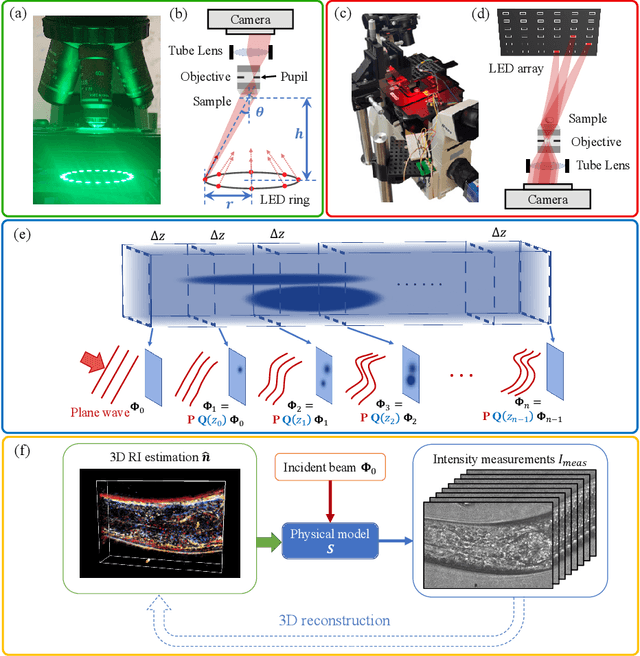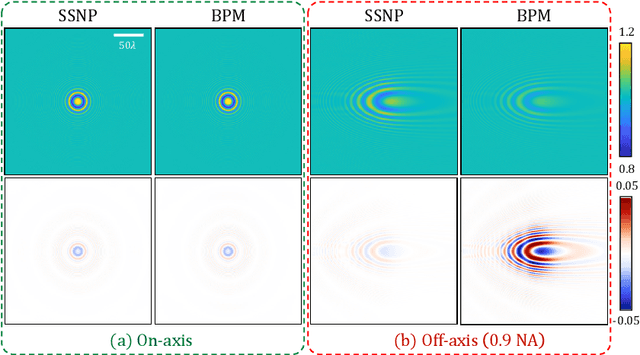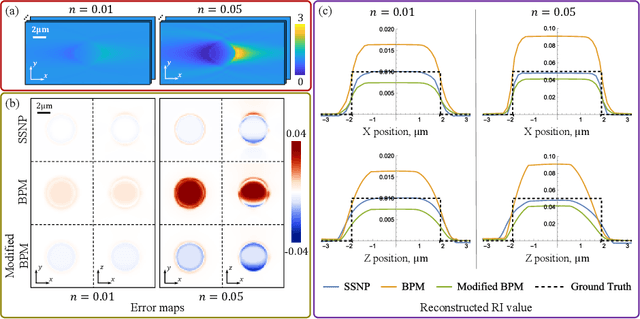High-fidelity intensity diffraction tomography with a non-paraxial multiple-scattering model
Paper and Code
Jul 13, 2022



We propose a novel intensity diffraction tomography (IDT) reconstruction algorithm based on the split-step non-paraxial (SSNP) model for recovering the 3D refractive index (RI) distribution of multiple-scattering biological samples. High-quality IDT reconstruction requires high-angle illumination to encode both low- and high- spatial frequency information of the 3D biological sample. We show that our SSNP model can more accurately compute multiple scattering from high-angle illumination compared to paraxial approximation-based multiple-scattering models. We apply this SSNP model to both sequential and multiplexed IDT techniques. We develop a unified reconstruction algorithm for both IDT modalities that is highly computationally efficient and is implemented by a modular automatic differentiation framework. We demonstrate the capability of our reconstruction algorithm on both weakly scattering buccal epithelial cells and strongly scattering live $\textit{C. elegans}$ worms and live $\textit{C. elegans}$ embryos.
 Add to Chrome
Add to Chrome Add to Firefox
Add to Firefox Add to Edge
Add to Edge